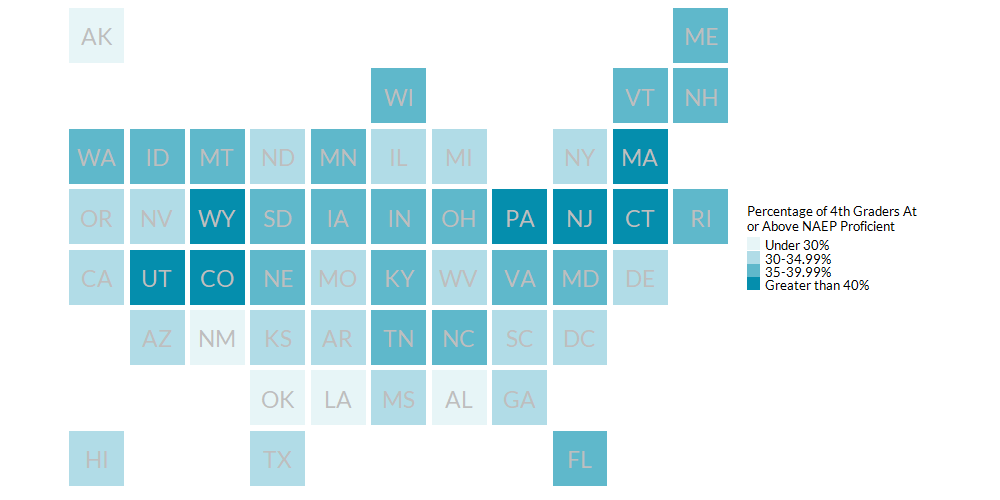
Indicator Data by State
Fourth-Grade Reading Proficiency, 2019
Because the early years of life are critical to brain development, parent-child activities like reading together are linked to future academic achievement. Nationally, many children do not get the start they need to launch a positive academic trajectory. Ideally, we would measure children’s language skills at age 5 or at kindergarten entry, but available national data examine reading skills in the fourth grade. Sixty-six percent of fourth graders failed to score at or above standards for reading proficiency in 2019. Not all children have the same access to developmental and educational supports, and structural racism can create barriers to accessing high-quality supports for children across racial and ethnic groups. The table below presents data disaggregated by race and ethnicity to help us identify inequities and work toward solutions that promote equity.
Home Visiting as Part of the Solution. Home visitors offer parents timely information about child development, helping them recognize the value of reading and other activities for children’s learning. This guidance translates to improvements in children’s early language and cognitive development, and in their academic achievement in grades 1 through 3.
Fourth-Grade Reading Proficiency by State, 2019

| State | Percentage of All Students Students At or Above NAEP Proficient | Percentage of American Indian or Alaska Native Students At or Above NAEP Proficient | Percentage of Asian or Pacific Islander Students At or Above NAEP Proficient | Percentage of Black or African American Students At or Above NAEP Proficient | Percentage of Hispanic Students At or Above NAEP Proficient | Percentage of White Students At or Above NAEP Proficient |
Notes: NA indicates reporting standards not met. Sample size insufficient to permit a reliable estimate. Black includes African American, Hispanic includes Latino, and Pacific Islander includes Native Hawaiian. Race categories exclude Hispanic origin. Results are not shown for students of two or more races. Data may not sum to totals because of rounding.
Definition: Fourth-grade reading proficiency refers to the percentage of fourth-grade public school students in the United States who scored at or above proficiency level in reading in 2019. Public schools include charter schools and exclude Bureau of Indian Education schools and Department of Defense Education Activity schools. Some estimates have been updated slightly from the 2020 Home Visiting Yearbook because of more accurate rounding for a few states and a corrected estimate for the United States overall. State-level data for most states are unchanged because more recent data were not yet available.
Source: U.S. Department of Education, Institute of Education Sciences, National Center for Education Statistics. (2019). National Assessment of Educational Progress, 2019 reading assessments. https://www.nationsreportcard.gov/reading/states/achievement/?grade=4